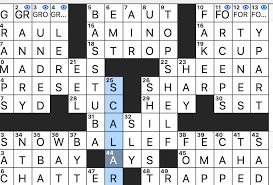As an avid reader of the New York Times, you may have noticed unfamiliar terms like “goad” appearing in some articles and wondered what exactly they mean. Goads are verbal prompts used by journalists during interviews to elicit more details or steer the conversation in a particular direction. The NYT employs goads strategically in their reporting to draw out key information from sources or gain additional insights into complex topics. Recognizing goads as a reader allows you to better understand the flow and context of these interviews.
What Are Goads on NYT?
Goads are the short comments appearing at the end of New York Times articles that allow readers to quickly react to and discuss the content. Originally launched in 2018, Goads aim to foster community engagement and spark thoughtful digital conversation around Times journalism.
As a reader, you can view all the Goads for a specific article by scrolling to the bottom of the page. The Times curates a selection of the most insightful and representative Goads to highlight at the top. Readers can then vote on which Goads they find most valuable, helping the best comments rise to the top.
To contribute your own Goad, simply select the ‘Add a Goad’ option at the end of an article. You’ll be prompted to enter a comment up to 140 characters. Goads should thoughtfully engage with and build upon ideas presented in the article. Personal attacks, spam and off-topic comments are not allowed.
The Times reviews all Goads before publishing to ensure civility and relevance. Goads that do not meet their community standards will not appear on the site. By raising the level of online discourse, the Times hopes Goads will become a meaningful venue for readers worldwide to connect and discuss the issues that shape our world.
Participating in the Goads program is easy and open to all. So next time you finish reading an insightful Times article, share your perspective. You just might spark an engaging digital dialog and help bring clarity to the topics that matter most.
The History of Goads on the New York Times Crossword
To fully appreciate the New York Times crossword, you must understand its storied history.
The first crossword
In 1913, the New York World newspaper published the first crossword puzzle. This sparked a crossword craze, leading the NYT to debut its own crossword in 1942. Created by Margaret Farrar, the inaugural NYT crossword defined the classic style: a symmetrical 15×15 grid with punny and literary clues solvable by educated, culturally literate solvers.
The next generation
As crosswords gained mainstream popularity, the NYT crossword evolved. In the 1950s and 60s, Eugene T. Maleska edited pithy, reference-heavy puzzles. In the late 60s, the grid expanded to 17×17, then 19×19, accommodating more ambitious themes and colloquial language.
The modern era
Under Will Shortz, editor since 1993, the NYT crossword emphasizes cleverness, whimsy, and inclusiveness. The 21×21 Sunday puzzle features wide-ranging vocabulary, popular culture references, and visual elements. Midweek puzzles have a difficulty progression to challenge both new and expert solvers.
The NYT crossword remains the gold standard, with a rich history, consistent quality, and timeless appeal. Tackling one is a joy for any wordplay and vocabulary enthusiast. With practice, you’ll be solving and learning with each puzzle.
Examples of Tricky Goads Found in NYT Crosswords
The New York Times crossword is known for including clever misdirects and tricky “goads” to throw solvers off. Here are a few common examples of goads found in the NYT crossword:
Vague Clues
Some clues are intentionally vague or misleading. For example, “Sticky stuff” could refer to glue, gum, or tree sap. “Bird feature” could be a beak, feather or nest. These clues are meant to mislead solvers into assuming one answer when the actual solution is quite different. Pay close attention to the number of letters in the answer and look for less obvious possibilities.
Tricks with punctuation
Clue writers will sometimes omit punctuation like quotation marks, commas or dashes to intentionally confuse the meaning. For example, “Chew noisily” wants the answer “chomp”, not “chew”. “Capital of Montana” refers to the city Helena, not the state. Watch out for these punctuation tricks.
Plays on words
The NYT crossword is known for clues that incorporate puns, anagrams, reversals or other wordplay. For example, “Stadium level” could refer to tier, “Tennis great” might be Navratilova spelled backwards, “Oaters” clues Westerns. Look for meanings that go beyond the obvious or literal.
Misused Prepositions
Prepositions like “to”, “for”, “with” or “at” are sometimes used misleadingly in clues. For example, “Roosevelt with a violin” wants the answer “fiddle”; “Name for a dog” is the word “Fido”; “Used for driving” refers to the word “tee”. Pay close attention to how prepositions are used in clues.
By anticipating these common goads and tricks, you’ll get better at solving even the trickiest NYT crosswords. With practice, you’ll be solving in no time!
Strategies for Solving Goads Clues
Solving the word puzzles known as “goads” in the Sunday edition of The New York Times requires some strategy and logic. The clues provided are meant to lead you to the solution in a roundabout way, so you must think critically about the wordplay and subtle hints. The following strategies will help you crack the code.
Carefully analyze the clue for types of wordplay. The most common in goads are:
- Homophones: Words that sound alike but have different spellings and meanings. For example, a clue containing “write” could mean “right.”
- Anagrams: Scrambled letters that form a real word or phrase. Look for small words within larger ones.
- Double meanings: A single word or phrase with two interpretations. One is usually very straightforward while the other is idiomatic.
Search for semantic connections. Consider how words, phrases or concepts within the clue might be related. Synonyms, antonyms, categories, rhymes, allusions and more. These connections point you to the solution.
Break down the clue word-by-word. Examine each word individually for alternate meanings or ways it could operate within the clue. A single word can make or break solving the goad.
Guess and check. Once you have some possibilities based on the strategies above, guess the solution and check if it satisfies the clue. Some goads have more than one viable solution, so keep guessing.
Use reference materials. Dictionaries, thesauruses and almanacs are useful for deciphering goads. Look up word origins, obsolete words, proper nouns and more. The solution may be archaic or obscure.
With regular practice, these strategies will become second nature. Solving goads, while challenging, can be an enjoyable mental exercise that provides a sense of accomplishment. Keep at it and your success rate is sure to improve over time.
The Future of Goads in the NYT Crossword
The New York Times crossword puzzle has included “goad” clues and answers for decades, harkening back to its roots. However, the future of goads in the NYT crossword is uncertain.
As crossword constructors aim for fresh, contemporary clues and answers, goads may fade from prominence. References to cattle prods and farming equipment seem antiquated to modern solvers. While goads remain fair game for trickier late-week puzzles, they appear less frequently in early week puzzles targeting casual solvers.
However, goads have enduring appeal for some solvers. They represent nostalgia for the puzzle’s origins and Americana. For these solvers, goads are a delightful challenge, requiring inference of meaning from cryptic or punny clues.
Niche Knowledge
Goads also represent niche knowledge that avid solvers accumulate over years of solving. Understanding goads demonstrates a solver’s breadth of vocabulary, familiarity with crossword conventions, and ability to deduce meaning from limited information. For this reason, goads will likely persist in late-week and specialty puzzles targeting the most devoted solvers.
In summary, while goads face an uncertain future in the NYT crossword, they will likely remain for the foreseeable future. However, their prominence and placement within the week may shift to focus on the most ardent solvers who continue to appreciate their trickery and nostalgic quality. For casual solvers, goads may fade in favor of more contemporary and accessible entries. The crossword must balance new and niche knowledge to satisfy the full range of solvers. Goads represent one mechanism for achieving this balance.
Conclusion
In summary, the New York Times Goad section offers a compelling collection of games, puzzles and brain teasers to challenge your mind and expand your thinking. Whether you prefer the logic of sudoku, the wordplay of crosswords or the visual-spatial reasoning of kakuro, the NYT Goad section has something for everyone. Solving these kinds of mental challenges on a regular basis can help keep your cognitive abilities sharp as you age and even provide stress relief and entertainment during your downtime. For a quick, engaging brain workout or just a fun distraction, check out the New York Times Goad section. Your mind will thank you.
Are you passionate about sharing your insights and expertise? We invite you to write for us! Whether you’re a seasoned writer or just starting out. We’re looking for fresh perspectives on a variety of topics, from lifestyle and wellness to technology and travel.
 Lifeyet News Lifeyet News
Lifeyet News Lifeyet News





